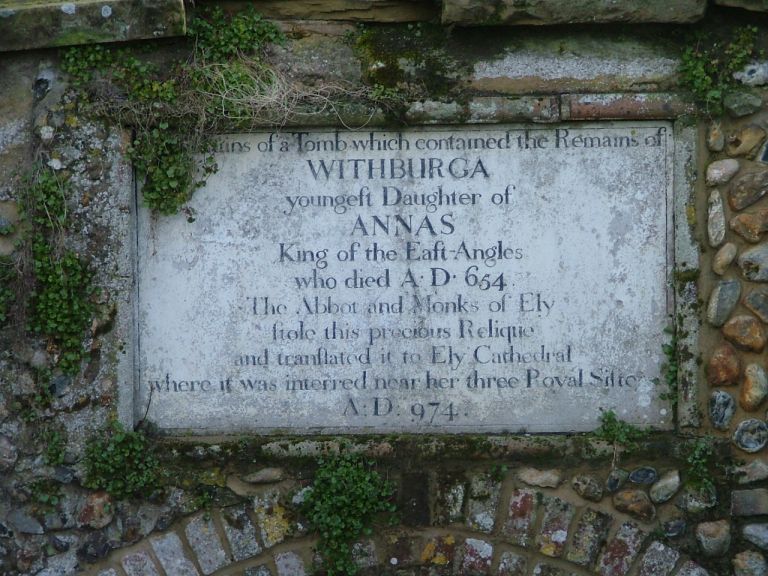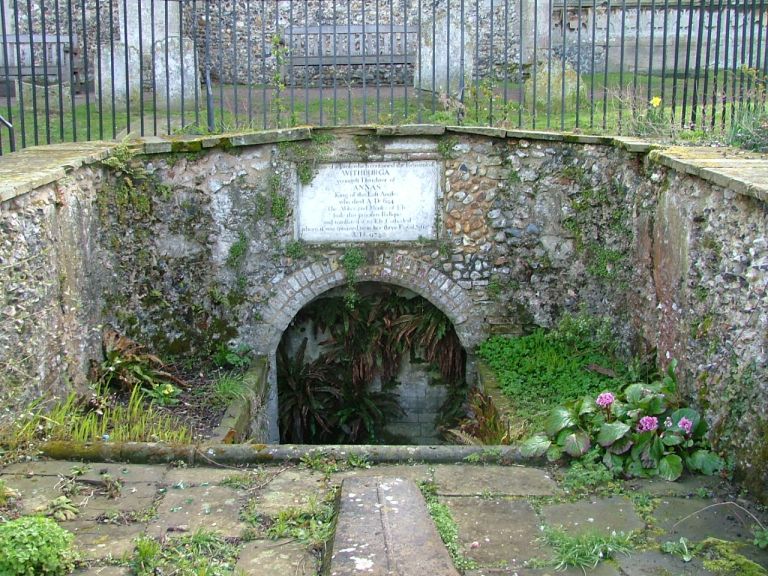 |
[ Outlaw Genealogy | Bruce
History | Lost Chords ] [ Projects | News | FAQ | Suggestions | Search | HotLinks | Resources | Ufo ] |
 |
[ Outlaw Genealogy | Bruce
History | Lost Chords ] [ Projects | News | FAQ | Suggestions | Search | HotLinks | Resources | Ufo ] |
So this seems to be John Outlawe and his "brothers" from West Dereham and be goes on to become John de Bernewelle Outlawe at Barnwell Priory....:
1387 - Manumission of three nativi by licence from the Holy See : John Outelawe senr., John O. junr., and Thomas. O., lay brethren of Norwich dioc. Bull addressed to West Derham Abbey. They were born of a free mother, but their father Nichs. O. / laicus was " servus " of the Bp. fo. 61. - BISHOP ARUNDELL'S REGISTER. See: The abbey of St. Albans from 1300 to the dissolution of the monasteries on the freeing of Villiens (serfs) and the Peasants Revolt. - Thomas Arundel
1392 - Priory of Barnwell - John de Bernewelle, or John Outlawe, elected March 1392, died Nov. 1408 - John de Bernewelle, (fn. 213) whose personal name was Outlawe; (fn. 214) possibly a canon of West Dereham, and one of the three brothers of that name [ White canon was he wearing white robes? ]
1507 - Will. -
Outlaw
(Owtlawe), Thomas, of Mattishall - probate ( 5 miles E.
by S. of East Dereham)
1567 - Outlaw
(Owtelawe), John, elder, joiner, of East Dereham - Will. (A
Joiner - Fine woodworker without using nails)
West Dereham - Wikipedia, the free encyclopedia
The church of West Dereham St Andrew is one of 124 existing round-tower churches in Norfolk .The distinctive feature of these churches is, of course, their round towers. The reason for their construction – mostly by the Saxons – is a matter of dispute.
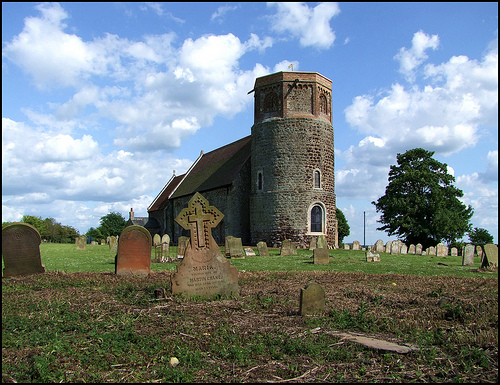
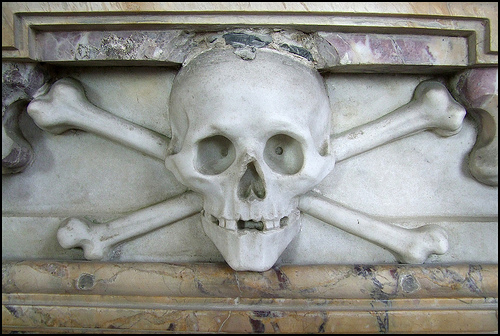
[ Looks very Saxon / Templar to me! ]
There were once two churches in this graveyard. Mortlock says that fragments of St Peter's church lie hidden in the undergrowth to the west of the present church, which may be true, but we couldn't find them - or any undergrowth for that matter, because there has been a recent careful and rigorous restoration of the graveyard here.
There was an Abbey in medieval times, not far off. It was founded by Hubert Walter, who was born in the parish. The name will be familiar to those of a certain age, for, as Arthur Mee recalled, he went on to become Richard the Lionheart's favoured Archbishop of Canterbury after they had crusaded together, and in history lessons we were told that he proved a strong prelate who could keep King John in check, when history lessons still taught such things, and they were thought important.
Hubert Walter accompanied King Richard on the Third Crusade, (1189) and was one of the principals involved in raising Richard's ransom after the king was captured in Germany on his return from the Holy Land. As a reward for his faithful service, Walter was selected to become the next Archbishop of Canterbury in 1193.
Hubert Walter - ...At the same time he was administering York, Walter founded a Premonstratensian house of canons on purchased property at West Dereham, Norfolk in 1188.[16] His uncle and other family members had favoured the Premonstratensian Order, and this monastery was located near the family lands in Norfolk.[17]
Theobald Walter, 1st Baron Butler - Eldest brother of Hubert Walter - nephews of Ranulf de Glanvill ( he died at the siege of Acre in 1190 ) - goes with Prince John to Ireland 1185 - Gets Limerick
i.e. Hubert Walter seems to be a Norman
| - - - - - - - - -
Houses of Premonstratensian canons - The abbey of West Dereham British History Online
A History of the County of Norfolk: Volume 2 (1906), pp. 414-418
HOUSES OF PREMONSTRATENSIAN CANONS
(White Canons)
42. THE ABBEY OF WEST DEREHAM
Hubert Walter, dean of York, who afterwards became successively bishop of Salisbury and archbishop of Canterbury, founded at his birthplace of West
Dereham, in the year 1188, an abbey for Premonstratensian canons, which was colonized from
Welbeck. The canons were to pray for the souls of the founder and his parents, his brothers and sisters and all his relatives and friends, as well as for the souls of Ralph de Glanville, justiciary of England, and Bertha his wife. (fn. 1)
King John, on 7 September, 1199, confirmed all the grants made to the abbey by the founder and by other early benefactors; at the same time, at the request of
the founder, who was then archbishop of Canterbury, he conferred on the abbey and its tenants exemption from all kinds of service, tolls and dues. (fn. 2) In the same year John granted to the abbey a weekly Wednesday market, and an annual fair of four days, namely on the festival of St. Matthew and the three following days, (fn. 3) and
in 1201, the king confirmed to them the grants of half the church of Holkham and of the church of
Ringland. (fn. 4)
Peter, son of Peter de Nerford, granted in 1280, to the abbot and canons of St. Mary of
Dereham, Richard de Ayssepele, Simon le Wodewide, and Simon the carter of Saham, with their tenements, belongings, and services, and 12d. of rents; to hold the same in free alms for the sustentation of one canon to celebrate in the abbey of Dereham for the souls of the faithful departed. (fn. 5)
The abbot and convent obtained leave in 1285 to enclose eight acres of land in West
Dereham, adjoining the abbey on the west side, to wit from the stone bridge of West Dereham to the end of their close called
Fishercroft, for the enlargement of their site. (fn. 6) Other grants of lands and rents were made by various benefactors so that by 1291, when the ecclesiastical taxation roll was drawn up, the endowments of this abbey were considerable, being of the clear annual value of £169 3s. 8½d. Their chief possessions were in Norfolk, scattered over thirtythree parishes, but they had also property in the dioceses of York, Ely, and Lincoln.
Elizabeth de Burgo, the king's kinswoman, had licence in 1336 for alienation in mortmain of 7
messuages, 112 acres of land, 8 acres of meadow, 10 acres of pasture, and 10s. 8½d. of rent in West Dereham and adjacent towns of Norfolk, together with the fair of
Wynwale, to the abbey of Dereham, to find a chaplain to celebrate daily in the chapel of St. Wynwale for the soul of Gilbert de Clare, late earl of Gloucester, and for the souls of herself, her ancestors, and heirs. (fn. 7)
Boniface IX, in 1399, sanctioned the appropriation to this abbey of the church of
Grimston, value not exceeding 90 marks, and that of the monastery, not exceeding 400 marks. On the resignation of the rector the church might be served by one of their canons. (fn. 8) In the same year the pope confirmed the decision made by the late bishop of Ely with regard to a dispute between the abbey and the priory of Barnwell as to the tithes of the sheaves of
'Nunne Court fee' pertaining to the church of Holy Trinity, Cambridge. The decree ordered the priory to pay 30s. yearly to the abbey for these tithes. The pope completed the ordinance by enjoining the priory to keep the chancel of Holy Trinity in repair and to pay
synodals. (fn. 9)
Two years later, September, 1401, this Cambridge church was fully appropriated to the abbey, by sanction of Boniface.
At the same time the two parishes of St. Peter and St. Andrew, West Dereham, situate close together in one churchyard, were united. It was stated that St. Peter's was so diminished in income that a priest could not be maintained. The convent and the parishioners of St. Peter's were freed from the repair of the church and chancel, and considered parishioners of St. Andrew's. (fn. 10)
Another church about the possession of which the abbey had some little trouble and litigation at an earlier period, was that of
Holkham, which had been given them by Aymer de Valence, who had made good his claim to it against the abbot of.
Viterbo.
In 1341 the latter abbot endeavoured to reclaim it from the abbot of West
Dereham, and the king ordered the prior of Walsingham to do justice in the
case, (fn. 11) which was evidently decided in favour of the Norfolk house as they are found in possession of the rectory in 1535.
When the abbey was visited in 1478 by Richard Redman, bishop of St. Asaph and abbot of
Shap, and by Hubert, commissary-general of the abbot of Prémontré, it was reported that the abbey held five churches, the cures of which were sometimes held by canons in perpetuity, sometimes by seculars, and sometimes by canons removable at pleasure. (fn. 12)
When the Valor Ecclesiasticus was taken in 1535 the clear annual value was declared to be £228 0s. 0¾d.
On 20 September, 1323, Canon Geoffrey de Driffield, from the abbey of Egleston, was sent to Dereham by the king, with the request that he might stay with them for a time, as the house of Egleston had been so destroyed by the Scotch rebels that the canons could no longer live there. At the same time, seven other canons of Egleston were distributed among the like number of Premonstratensian houses, including the Norfolk abbey of Langley. (fn. 13)
In May, 1325, the county escheator was ordered not to further intermeddle with this abbey, which he had taken into the king's hands on the death of the last abbot on the plea that the lands that belonged to Aymer de Valence, late earl of Pembroke, were in the king's hands. The king had learnt by inquisition that the abbey was of the advowson of the earl as of the inheritance of
Monchesney, and that from the time of its foundation until then the patrons of the abbey, when it was vacant, had no custody there, and that the convent did not seek licence to elect from any patron, and did not present him whom they had elected to the patron before the installation. It was further ascertained that the patron did not receive any profit at the time of voidance, but that whenever a patron died, the abbot and convent celebrated mass and distributed alms for his soul on the same scale as at the death of an abbot, namely each canon-priest of the house celebrated three masses, and each canon not a priest said a
psalter, and each lay brother (conversus) said 150 Our Fathers and as many Hail
Marys, and they distributed to the poor daily for thirty days after his death a loaf, a gallon of ale, and a dish of meat or fish, such as a canon is wont to receive daily. (fn. 14) In 1328 protection was granted for the abbey of
Dereham, which was of the advowson of the heir of John de Hastings, deceased, a minor in the king's custody, in consequence of its being impoverished and in debt through injudicious management. Richard
Coppe, a parson of the church of Oxborough, and Richard de Depham were appointed custodians, under whose direction the abbot was to apply the revenues to the payment of the debts, saving a reasonable sustenance for himself and the canons and their servants. (fn. 15)
In 1325 the abbot of Dereham was prohibited by the king from leaving the kingdom to attend the general chapter at
Prémontré, (fn. 16) but in September, 1327, Bartholomew de Burghersh, constable of Dover Castle, was directed to permit the abbot of Dereham to cross the seas from that port to attend the chapter general at
Prémontré, and to allow him 20 marks for the expenses of himself and attendants. (fn. 17) On 26 June, 1328, an exactly similar order was made for a like purpose, save that £20 instead of 20 marks was contributed for expenses. (fn. 18)
On 15 May, 1325, John, abbot of Welbeck, as father abbot of Dereham, wrote to the bishop of Norwich to inform him of the death of the late abbot, Paul de
Tilney, and of the election of John de Rutham, in his presence and that of the abbots of Seiston and
Wendling, and to ask for his episcopal benediction. (fn. 19) Although the White Canons were specially exempt from diocesan visitation, and their elections were held independently of the bishop, it was usual for the abbot-elect, after he had been chosen by his convent and installed by the father abbot of the house, to promise canonical obedience to his diocesan, saving all rights of his order, and to ask for episcopal benediction. In the case of John de
Rutham, the bishop's blessing was given on 21 May.
In 1344, Mary de Sancto Paulo, countess of Pembroke, obtained the sanction of Clement III, on behalf of the Premonstratensian abbot of West
Dereham, for faculty to confer the office of notary public on six persons to be nominated by the countess. (fn. 20) Pope Urban V, in 1366, granted, during ten years, an indulgence of a year and 160 days to penitents visiting the chapel of the Holy Trinity in this monastery on the principal feasts. (fn. 21)
William de Holt received the episcopal benediction as abbot on 6 April, 1368, in the manor chapel of
Heningham, and promised canonical obedience, saving the rights of his order. (fn. 22) His obedience, however, seems to have been somewhat incomplete if he is the person referred to in
1387, when the crown appointed seven officials to arrest William Holt, an 'apostate vagabond canon' of Dereham Abbey, signified as such to the king by John, abbot of
Barlings, and George, abbot of Welbeck, visitors of the English Premonstratensian houses. If arrested, he was to be delivered to his abbot, or to one of the visitors or their attorney. (fn. 23)
Abbot John Saresson alias Wygenhale acted as vicar-general to the bishop in 1436, as well as on many later occasions. In 1444 he was collated to the deanery of the college of St. Mary-in-the-Fields, Norwich, as well as to the rectory of St. Mary's, Great
Massingham; which preferments he held in conjunction with the rule of the abbey. He died about 1455, and is particularly memorable on account of the survival of the precatory or mortuary roll that was issued by his convent at the time of his death. It is a class of documents of which very few examples are extant. On the death of a religious, and more especially of a religious superior, a roll was prepared on which was written a statement of the death, together with some eulogy or description of the deceased, with religious reflections, and a request for the prayers by other houses. The roll was then carried round, sometimes only to neighbouring houses, or those of the same order, but in the cases of superiors or distinguished personages these brevia or briefs were multiplied, and sent about throughout the kingdom at large. The monk or canon who carried the brief was termed a
breviator, and on its reaching each monastery it was inscribed with the titulus or description of the house, accompanied by a promise of their prayers for the departed. On Abbot Wygenhale's death a beautiful roll was prepared. That which now remains (but it was doubtless originally longer) is 4 ft. 5½ in. long by about 12 in. wide, formed of two membranes. On the upper membrane is an illuminated architectural design divided into three compartments. At the top is the Eternal Father supporting a crucifix, and at the right side is the small figure of an abbot kneeling, with a scroll asking the divine protection and guidance for John Lynn, who was the abbot that succeeded the deceased. In the centre is the Blessed Virgin. At the base is the scene of the interment of John
Wygenhale, most interestingly portrayed. (fn. 24)
The encyclical letter from the abbey of West Dereham, which follows the illumination, is a warm eulogy of the deceased. The terms were probably not entirely complimentary, or as a matter of course, for Abbot Wygenhale was evidently highly esteemed outside his convent. When he attended the bishop in 1449 as
vicargeneral, at the ceremony of making the priory of Wymondham into an abbey, he is described by John of
Whethamstede, the chronicler of St. Albans, as vir altae discrecionis et suorum gravitate pollens. (fn. 25)
The tituli or descriptive endorsements that can now be traced on the back of the roll are those of the Austin house of Christ Church, Hampshire; of the Premonstratensian abbey of
Titchfield, Hampshire; of the great abbey of Bury St. Edmunds; of the Cistercian monastery of Lowth Park, Lincoln; of the Benedictine abbey of the cathedral church of Worcester; and of the Austin house of St. James, Northampton.
Bishop Redman's first visitation of West Dereham occurred in June, 1475; he arrived at the abbey at the dinner hour on the 26th, and left for Wendling on the 28th. (fn. 26) The visitation of 1478 extended from 28 to 30 June, when he found everything in good order. The visitor enjoined the presence of a deacon at the high altar daily; also that on recreation days the brethren were to go out and return unless otherwise ordered by the abbot: anyone leaving the precincts without permission was to be punished the same as an apostate.
There was an abundant supply of all necessaries, and the debt was but slight. In addition to John Lynn, the abbot, and John
Harnes, the sub-prior, thirteen other canons were present at the visitation. (fn. 27)
On 23 July, 1482, William abbot of Welbeck wrote to Bishop Redman to tell him of the death of John Lynn alias Clerk, abbot of
Dereham, in which he pleaded the poverty of his daughter-house of Dereham as a reason for pressing on with the new election with all possible speed, and asking that on this occasion only he might proceed without delay in ordering a new election, and in admitting and installing the abbot elect. (fn. 28) Accordingly at the next visitation in August, 1482, the election of William Maxey as abbot took place in the bishop's presence.
At this time he ordered that silence was to be better observed. Nineteen canons, including the abbot and prior, were present on this occasion. (fn. 29)
The bishop's next visit was on 22 June, 1486, when he arrived at West Dereham at suppertime. The house was formally visited on the morrow, and he tarried there quietly over 24 June for the solemn observance of the feast of St. John Baptist, supping at Walsingham on the 25th. (fn. 30)
At a visitation just two years later, John Martyn, abbot, William Maxey, the late abbot, eleven other priests, and three deacons were present. The visitor reported that the abbot was provident and circumspect; that the debt of £200 at the time of his election had been reduced to £100; and that there was a good supply of stores and cattle.
George Lytylport, priest, was found in prison for theft and other sins; he was penitent, but ordered to remain in prison until next general chapter. (fn. 31)
The next visitation was on 22 September, 1491, when John Wysbech, abbot, William Maxey, late abbot, nine other canons, and a novice were present. The novice, William
Faryeley, had struck a brother and flung him into the grate; the visitor ordered him forty days of bread and water, and then to be sent to
Halesowen; but at the unanimous prayer of the abbot and convent the last part of the sentence was revoked. (fn. 32)
In 1494 the house was again visited, when John Martyn (an alias of Wysbech), the
exabbot, and ten others attended. The visitor reported well of the house. (fn. 33) Again, in October, 1500, the visitor was at this house, when John Wysbech is entered as the abbot. The report was quite excellent.
The last recorded visitation took place 10 August, 1503; the same abbot and ex-abbot were present, and fourteen other canons. Bishop Redman found several insufficiently taught; therefore he recalled Brother Robert Watton from the university, to be joined in office with the prior, and diligently to teach his brethren. Thomas Fychele was removed from the subpriorship for his negligence in his duty; otherwise the condition and discipline of the house were good. (fn. 34)
Legh and Ap Rice, Cromwell's tools and visitors, surpassed themselves in their comperta as to this abbey, on which they reported in 1536; according to their preposterous return the canons were all incontinent, and were ready to confess themselves as such, longing to marry, and believing that the king had been divinely sent on earth to bring this about. (fn. 35) John Ap Rice, in whose handwriting these comperta were drawn up, made earnest suit for a grant of this house, which it was thus his interest to vilify. In 1538 he petitioned Cromwell for the lands. He pleaded that there was no fee attached to his office; that he had been concerned in drawing up divers great instruments in the process of divorce of Queen Anne; and that he wrote to the king the abridgements of the comperta of the late visitation. He stated that the manor of West Dereham was worth £52 12s. 8d., and the residue of the rent was £200, and the movables worth £600. He promised if his petition was granted to retain only £50, giving Cromwell the other £200 a year, and movables to the value of £400 or £500. It is scarcely necessary to say that the chance of so great a share of the spoils was accepted by Cromwell, and the slanderous visitor obtained his grant. (fn. 36)
It is not in any way credible, if the visitors' report of the condition of this house had been true or credited, that Abbot Roger, who presided over a convent charged with these outrageous offences, would have been assigned the unusually large pension of £66 13s. 4d. This pension, as well as smaller sums to five of his canons, was granted on 6 November, 1539. (fn. 37)
Abbots of West Dereham [ No menttion of John Outlaw (or his brothers) not specifically mentioned prior to
~1392 ]
Augustine, (fn. 38) appointed 1188
Ralph, (fn. 39) occurs temp. Richard I, John, Henry III
Remigius, (fn. 40) occurs 1231
Angerius, (fn. 41) occurs 1232
Roger, (fn. 42) occurs 1268
Denis Walter, (fn. 43) occurs 1286
Simon, (fn. 44) occurs 1304
Walter de Donton, (fn. 45) elected 1306
Paul de Tilney, (fn. 46) elected 1313
Bartholomew, (fn. 47) occurs 1316
John de Rutham, (fn. 48) elected 1325
Nicholas de Dereham, (fn. 49) elected 1339
William de Holt, (fn. 50) elected 1368
Constantine, (fn. 51) occurs 1393
John Flete, (fn. 52) occurs 1398
John, (fn. 53) elected 1412
Robert, (fn. 54) occurs 1428
John Wygenhall alias Saresson, (fn. 55) elected 1429
John Lynn, (fn. 56) elected 1455
William Maxey, (fn. 57) elected 1482
John Martyn (fn. 58) alias Wysbech, (fn. 59) occurs 1488
William Norwich, (fn. 60) elected 1511
Roger Forman, (fn. 61) elected 1522, last abbot
| - - - - - - - - - -
Premonstratensian
a member of an order of regular canons founded at Prémontré in France in 1120,
or of the corresponding order of nuns. The Premonstratensians wear white
habits and follow a strict form of the Augustinian rule, combining contemplative
life with active ministry. The order had several abbeys in Britain before
the Reformation and still exists in Europe.
The name comes from medieval Latin Praemonstratensis, from Praemonstratus
(literally ‘foreshown’), the Latin name of the abbey of Prémontré, so
named because the site was prophetically pointed out by the order's founder, St
Norbert (c.1080–1134).
Another attraction may have been the fact that these abbot's were associated with the crusades ( Almeric ) Notice also that the Abbey in Dereham is established (1188) the year after the abbeys have been destroyed in Jerusalem and the next year Hubert Walter follows the king on the Third Crusade in 1189:
CATHOLIC ENCYCLOPEDIA
- Premonstratensian Canons
- Founded in 1120 by
St. Norbert
at Prémontré, near
Laon
, France. At first they
were not bound by any fixed rule,
charity
being the bond of their union, and the example of their founder their rule of
life
. After a while
Norbert
unfolded his
mind
to his
disciples
on the special regulations which they should
adopt
.
...
In 1130 King
Stephen
gave them his castle on the River Keres, and thus was founded the
Abbey
of
St. Stephen
, the first of numerous monasteries
in Hungary.
Almaric
, who had shared in
St. Norbert's
apostolate
, a famous preacher in aid of the Crusades,
was requested by Innocent
II to preach in Palestine. At the head of a chosen band of
Norbertines he set out in 1136 for the Holy Land, where he was hospitably
received by
Fulco
of
Anjou
, King of Jerusalem,
and by
William
, Patriarch of the
Holy
City
. In the following year
Almaric
founded the Abbey of St. Abacuc.
Henry
Zdik
, Bishop of Olmütz,
made a pilgrimage to
Jerusalem
. He visited
St. Abacuc
and was so much touched by what he saw that he asked to be received into the
order. Having obtained some
religious
, he returned to Bohemia
and founded the Abbey of Mount
Sion
at Strahov,
Prague
. This abbey flourished
so much that it was called the seminary
of bishops, having
given eight bishops to Prague,
ten to
Olmütz
, and some to other dioceses;
a
patriarch
(John of
Luxemburg
) to Aquileia, and a cardinal
(John of
Prague
) to the Church.
In 1141 the Abbey of St. Samuel, near Jerusalem,
was founded, and in 1145 another at
Bethlehem
.
The abbeys were
destroyed in 1187, when many of the
religious
were put to the sword or perished in the fire. Those who escaped founded a
new community at
Acre
; but in 1291 this place, the last stronghold of the Christians
in the Holy Land, was taken by the Sultan Saraf, who cut to pieces the abbot,
Egide
de Marle, and put the
religious
, twenty-six in number, to death.
Norfolk Record Office - NROCAT Outlaw (Owtlawe), Thomas, of Mattishall
1492 - conveyance
by Thomas Harleston and Thomas Childerhous to Robert
Aleyn, Thomas Outlawe, Geoffrey Partryk, Robert
Foster, Andrew Deen, Geoffrey Deen, John Leveryngton, Robert
Lemmon, William Corton, Thomas Aleyn and John Childerhous of 1 acre with a
garden on the southern boundary in Mattishall, the south head of
which abutted onto the King's highway, 1492.
1507 - Will. -
Outlaw
(Owtlawe), Thomas, of Mattishall - probate
1567 - Outlaw
(Owtelawe), John, elder, joiner, of East Dereham - Will. (A
Joiner - Fine woodworker without using nails)
GENUKI Norfolk Genealogy Towns and Parishes Mattishall White's 1845
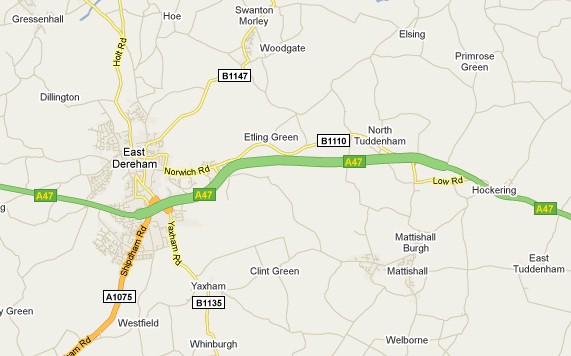 MATTISHALL is a large and well built village, and parish, 5 miles E.
by S. of East Dereham, and 11 miles W. of Norwich, comprising 1,155 inhabitants
and 2,238 acres of land, of which about 900 were inclosed in 1801.
MATTISHALL is a large and well built village, and parish, 5 miles E.
by S. of East Dereham, and 11 miles W. of Norwich, comprising 1,155 inhabitants
and 2,238 acres of land, of which about 900 were inclosed in 1801.
It is in several MANORS: Sir W.R. Clayton is lord of Whinburgh; Lord Wodehouse, of Thuxton-Hall and Barnham-Broom; Edward Lombe, Esq. of Thuxton-Waces; Lord Bayning, of East Tuddenham-Cockfields; T.T. Berney, Esq., of Hockering, and Mattishall-Tuddenham; T.B. Evans, Esq., of North Tuddenham-St. Clere and Bellhouse-hall; and G. Cooper, Esq., of Moutneys.
The CHURCH (All Saints,) stands on an eminence in the centre of the village,
and is a large Gothic pile, with six bells and a lofty tower.
...
Carpenters. Outlaw, Samuel ~1845
Norfolk Churches - All-Saints Mattishall
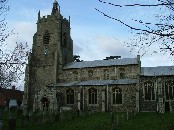 There
are just six painted panels, of which four are clearly diescernible and a
fifth identifiable from a fragment. They show St Thomas of Canterbury, St
John the Evangelist, St John the Baptist, St Withburga and the perfume pot of St
Mary of Magdala.
There
are just six painted panels, of which four are clearly diescernible and a
fifth identifiable from a fragment. They show St Thomas of Canterbury, St
John the Evangelist, St John the Baptist, St Withburga and the perfume pot of St
Mary of Magdala.
Norfolk Churches - East Dereham - Saint Nicholas
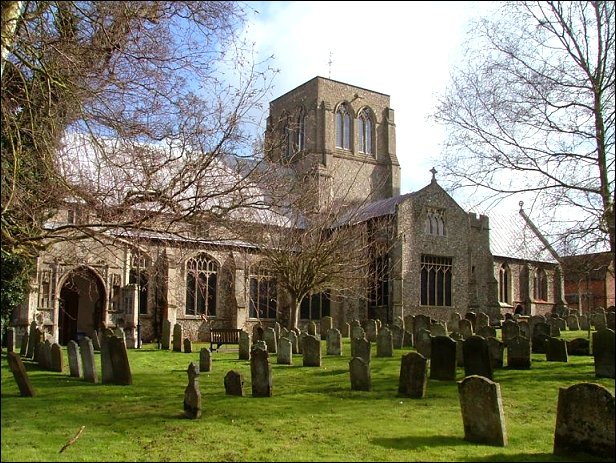 Dereham
is the Heart of Norfolk. I know this, because it tells you so on
the signs as you enter the town. Until about twenty years ago, Dereham was
East Dereham, just a little market town in the Breckland, but it has
undegone a massive expansion and redefined itself with lavish amounts of civic
pride, and why not? In terms of population, Dereham is now the sixth largest
place in Norfolk, but the first five - Norwich, Yarmouth, Lynn, Thetford and
Gorleston - are all urban sprawls, and so Dereham is quite justified in thinking
of itself as the largest small town in the county, remote and important and
almost as close to the exact centre of Norfolk as it is possible to be.
Dereham
is the Heart of Norfolk. I know this, because it tells you so on
the signs as you enter the town. Until about twenty years ago, Dereham was
East Dereham, just a little market town in the Breckland, but it has
undegone a massive expansion and redefined itself with lavish amounts of civic
pride, and why not? In terms of population, Dereham is now the sixth largest
place in Norfolk, but the first five - Norwich, Yarmouth, Lynn, Thetford and
Gorleston - are all urban sprawls, and so Dereham is quite justified in thinking
of itself as the largest small town in the county, remote and important and
almost as close to the exact centre of Norfolk as it is possible to be.
The bell tower dates from the early years of the sixteenth century. The tower must be fully 150 years earlier - and possibly earlier than that, for although it presents itself with Decorated features it may be a rebuilding of a Norman tower, perhaps after the original fell.
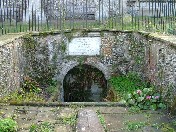 Withburga's Well Memorial
Withburga's Well Memorial
St Withburga and Her Well at East Dereham - In 870 King Edgar gave to the Bishop of Winchester Ely and all the other monasteries destroyed by the Danes. He restored Ely, and at Dereham had a prison and court-house. On one visit, he suggested that Withburga, a royal princess, should lie at Ely with her three sisters, but Dereham folk did not wish to lose their saint. The next time, Ely monk:s gave a great feast to the men of Dereham and afterwards crept away, broke into the shrine, loaded the coffin onto an ox-wagon and set off for Ely. When morning came and the desecrated tomb was found, there was hot pursuit - they had almost caught up by Brandon, only to find the monks had got the coffin aboard a barge and were sailing down the river to Ely. The account in the Liber Eliensis ends with 'and the men of Dereham ran along the bank, throwing clods of earth'. When they returned to Dereham, they found the empty tomb had filled with a spring of clear water, which they felt certain was recompense for the loss of their beloved Saint. Still pilgrims continued to come to pray, and drink the holy water, which to this day has never run dry.
Years later, at the end of the eighteenth century, a Bath-house was built over the spring, in the hope that the town would become a second Buxton nor Bath. Described as 'a hideous building of brick and plaster', it was never popular and about 1880 the Reverend Benjamin Armstrong got permission to pull it down. It was replaced with iron railings and for years was smothered in ivy and ferns, the water green with duck-weed. Since 1950 it has been cleared, the ivy replaced with climbing roses and rock plants, and the water kept clean.
